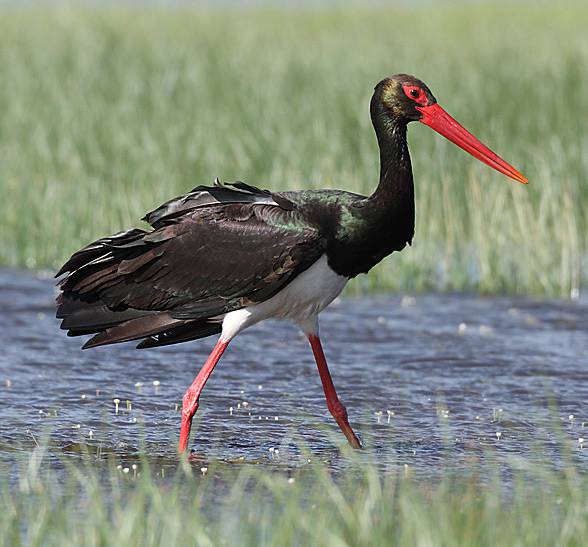Post by Bonobo on Apr 10, 2016 15:10:46 GMT 1
-%5B.jpg)



www.nauka.gov.pl/en/polish-science-news/ornithologist-poland-is-a-power-in-terms-of-number-of-black-stork,akcja,pdf.html
Ornithologist: Poland is a power in terms of number of black stork
Research over the past years show that Poland is a power in terms of numbers of black stork.
About 1400 pairs nests in our country, and in 8-10 thousand pairs Europe, said Prof. Piotr Profus from the
Institute of Nature Conservation PAS in Kraków. Data presented by researchers show an increase in numbers of
the species in Poland. It is estimated that before the war there were only 100 pairs of black storks in today’s
Polish territory. The first study of numbers conducted in 1966 showed about 530 pairs. For example, in Silesia,
in the 1930s there were six pairs of these birds, and now there are about 200. The greatest changes in numbers
occurred in central Poland, where in 1966 there were only about 20-30 pairs, in 1981-1982 about 80 pairs, and
currently about 200. It is estimated that in each of Masuria and Małopolska there are also 200 pairs of black
storks, and in Wielkopolska 100-120. The greatest concentration of storks is found in the Bialowieza National
Park and Magurski National Park. In the former Kielce province, in the years 1991-1993 the population of this
species was estimated at 33-40 pairs, and in the early twenty-first century it increased to 48-60 pairs. The
researcher pointed out that in our country there still aren’t many areas well-studied in terms of population of
this species. Best studied area, already for half a century, is the Kampinos Forest, where in the beginning of the
research there was only one pair, and now there are 13-17. Fairly well studied is also pra-valley Barycz and
Upper Silesia. Profus explains the increase of black stork population in Poland with protection of this species and
its breeding grounds. Another reason is the introduction in the 1970s and 1980s of beaver habitats in Poland,
which form pools suitable for breeding of fish and amphibians. This significantly improved feeding conditions of
storks that eat feed mainly on fish and amphibians. According Profus, over the last fifty years the whole
European population of black stork has increased its reach by nearly one million square kilometres. The
expansion of this species to the west has continued since the 1970s, the black stork expanded its reach to the
area of West Germany, Belgium, Luxemburg, France, Italy and the Iberian Peninsula. It is not yet found in
Switzerland. There are also countries where in recent years a decline of this species has been observed,
including Lithuania, Latvia, Estonia and Macedonia. For example, stork population in Latvia used to be estimated
at 1000-1300 pairs, and now there are only 500-700 pairs. According to the researcher, the reason for this
situation in the Baltic countries is the privatisation of forests and resulting predatory exploitation of forest
stands. Black stork (Ciconia nigra), live Eurasia. It is a rare forest bird, which, unlike the white stork, avoids
human habitations. In the lowlands it usually nests in oaks and pines, and in the mountains - in beeches and
firs. European populations winter in the northern and eastern Africa. Black stork usually arrives in Poland in late
March, and lays three to five eggs by mid-May. Parenting birds usually move two to four young out of the nest,
rarely one or five. Ornithologists have observed six grown young in the nest only seven times in the world: in
China, Germany, Austria, Czech Republic, twice in Hungary and once in Poland, in Pieniny National Park. The
expert emphasised that to feed the two young, parents need to provide not less than 200 kg of fish, frogs and
other amphibians. Threats to the breeding grounds are martens, hawks, ravens, eagles and more recently also
white-tailed eagles, which may plunder nests and kill the young. Black Stork is a species covered by strict legal
protection in Poland. PAP - Science and Scholarship in Poland








